Spud Papers – St. Christopher

 1870. 1d. & 6d.
1870. 1d. & 6d.
Genuine
Typographed (i.e., engraved in epargne), on thin white paper, slightly glacé. Watermark, crown and cc; perforated 12 1/2. Both stamps are from the same die. The monetary value is not always put exactly in the center of the value-label. In the copies now before me, the ONE PENNY is printed low down, almost touching the bottom of the label; whilst the six PENCE is printed high up, almost touching the top of the label. There are three jewels, in three separate compartments, on the band of the coronet; the one over the ear being rather indistinct. The forehead is lightly shaded. One wave of the hair comes down so low as to cover the corner of the eyebrow. The front pearl of the coronet touches the white circle a little before the beginning of the first H in CHRISTOPHER. A perpendicular, let fall from the right arm of the T in the same word, would cut into the bunch of curls at the back of the head. The ear is shaded all over, but very lightly at the bottom; indeed, the whole of the portrait is shaded, with the exception of a small portion of the front of the forehead.
Forged
Lithographed, on rather thick, unsurfaced paper. No watermark; perf. 12 1/2. Both stamps from the same stone. The values are properly placed, in the middle of the labels. There are dim blotches, instead of jewels, in the three compartments of the lower band of the coronet. The forehead has no shading, and is, therefore, much too white. The base of the neck is also unshaded.
The hair sweeps clear of the eyebrow. The front pearl of the coronet comes almost under the middle of the H in CHRISTOPHER. A perpendicular, let fall from the right arm of the T in the same word, would cut off the back of the head without touching the chignon. The rim of the ear is unshaded, until it is covered by the hair. The fleur-de-lis, in the right bottom spandrel, is imperfect. The perforation is rather better than usual. Printed in sheets of 25, 5 X 5, and ungummed. The postmark is like one of the earliest Spanish cancel-stamps; an oval frame, containing six parallel bars.
From “The Spud Papers” by Atless, Pemberton & Earée, 1871-1881.

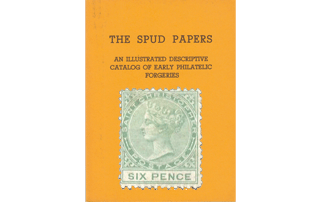
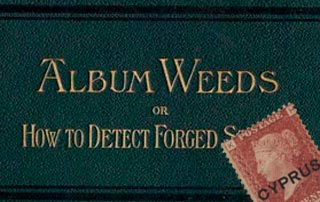
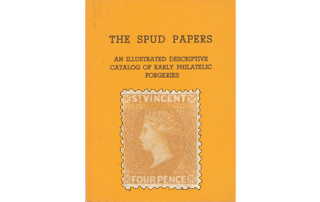
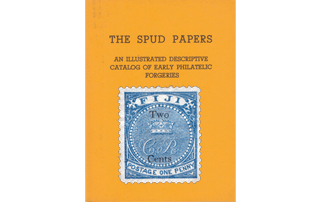
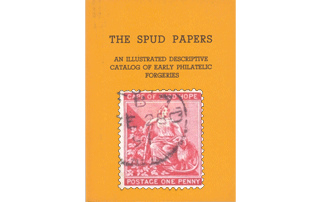
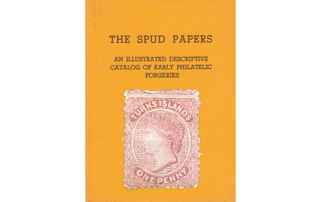
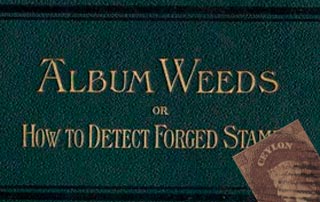


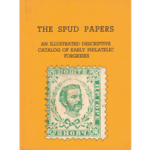
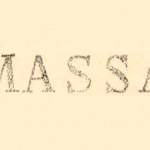
Leave a Reply
Want to join the discussion?Feel free to contribute!